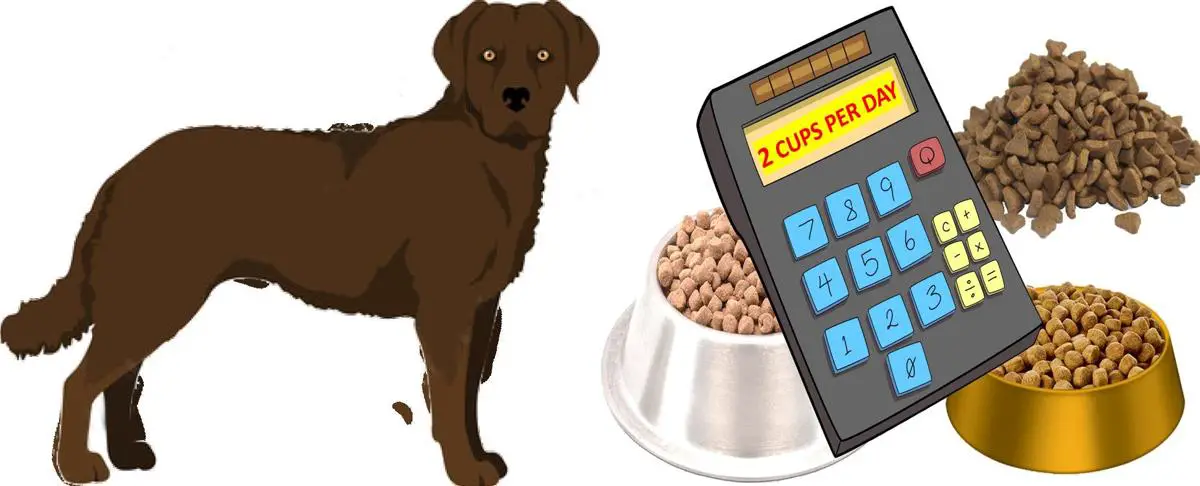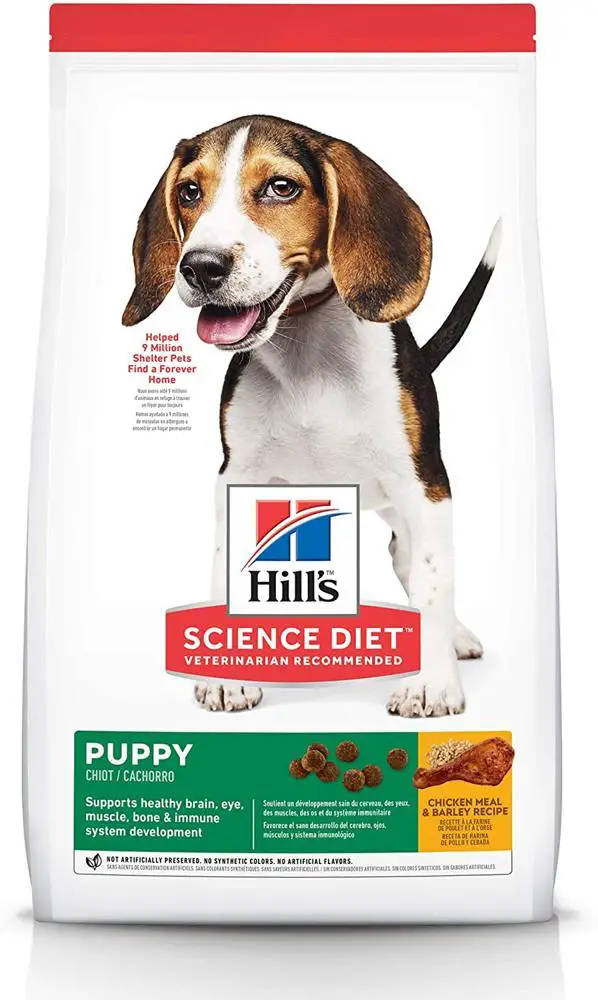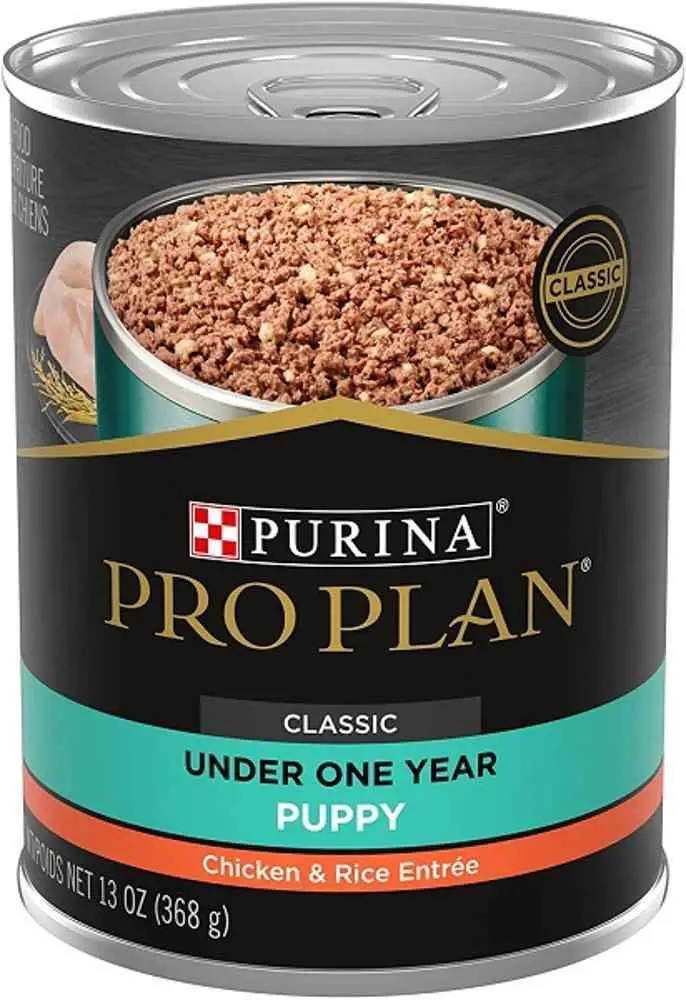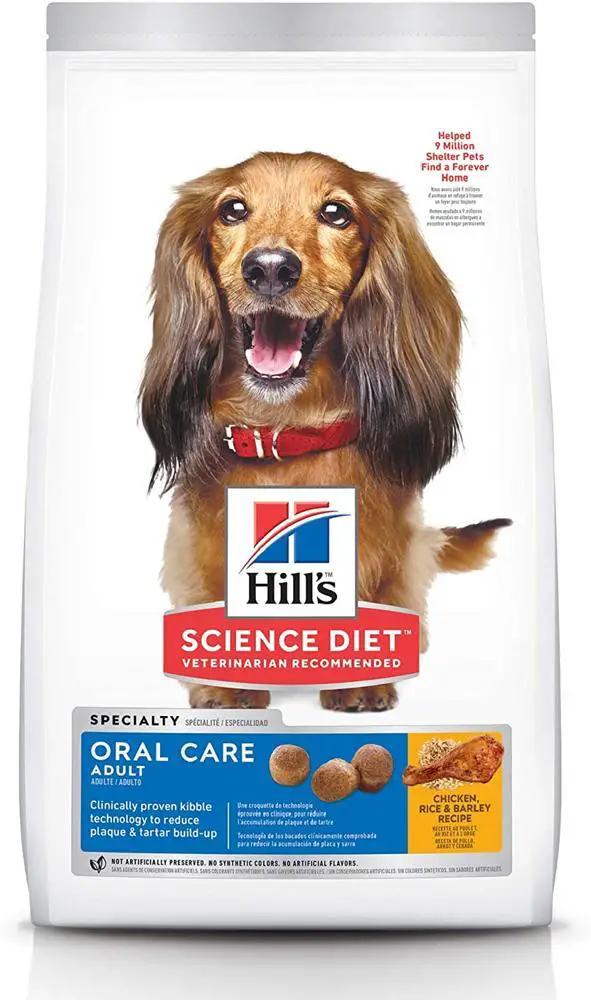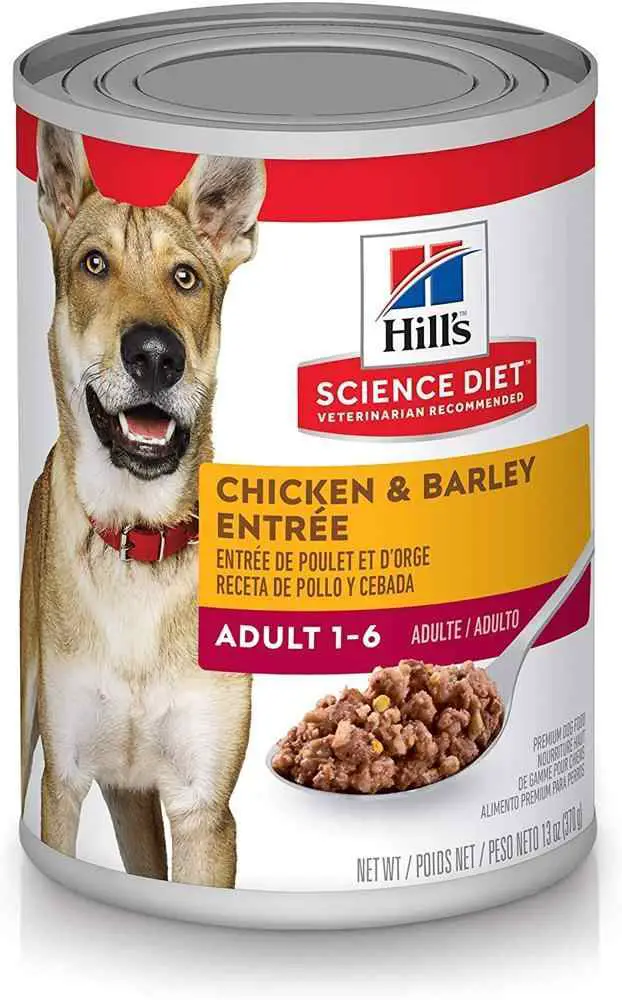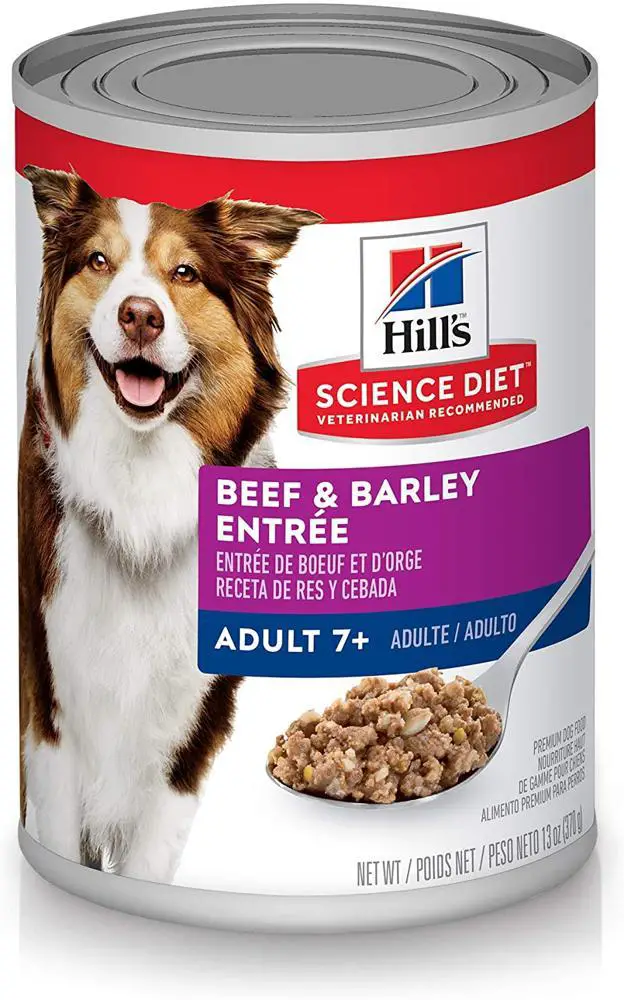Quick Links: Table of Contents
- Chesapeake Bay Retriever Food Calculator
- Chesapeake Bay Retriever Feeding Chart
- Best Food for Chesapeake Bay Retriever. Chesapeake Bay Retriever Feeding Guide
- How Much Food to Feed the Chesapeake Bay Retriever
- How Many Times to Feed the Chesapeake Bay Retriever a Day
- Conclusion
Introduction to Feeding the Chesapeake Bay Retriever
Most dog owners do not know how to properly feed their dogs.
Also, most dog owners overfeed their dogs.
That explains why 59 percent of dogs and cats are overweight, according to research.
Overfeeding your Chesapeake Bay Retriever will make your Chesapeake Bay Retriever overweight and obese. Obesity leads to worse health problems for your Chesapeake Bay Retriever.
Unfortunately, the Chesapeake Bay Retriever is a dog breed that can become overweight very easily.
Therefore, you need to pay careful attention to what you feed your Chesapeake Bay Retriever and how much food you feed your Chesapeake Bay Retriever.
Furthermore, when you overfeed your Chesapeake Bay Retriever, you waste dog food. Wasting dog food is the same as wasting money. Dog food is a recurring expenditure that adds up to a lot of money over the lifespan of your Chesapeake Bay Retriever.
The average lifespan of the Chesapeake Bay Retriever is 10.7 years.
When you feed your Chesapeake Bay Retriever the right type of food and the right amount of food, your Chesapeake Bay Retriever will be of the right body weight and the right body condition (not overweight or underweight).
Similarly, underfeeding your Chesapeake Bay Retriever is as bad of a problem as overfeeding your Chesapeake Bay Retriever.
When you underfeed your Chesapeake Bay Retriever or feed your Chesapeake Bay Retriever an incomplete or unbalanced diet, you reduce your Chesapeake Bay Retriever`s quality of life.
The right amount of food that your Chesapeake Bay Retriever needs depends on six important factors.
You need to take all these factors into account when developing a meal plan for your Chesapeake Bay Retriever. These six factors are:- The life stage of your Chesapeake Bay Retriever (puppy, adult, or senior)
- The current weight of your Chesapeake Bay Retriever
- The body condition of your Chesapeake Bay Retriever (normal weight, overweight, underweight)
- How active your Chesapeake Bay Retriever is (inactive/obese prone, or active/athletic)
- If your Chesapeake Bay Retriever has been spayed/neutered
- The type of dog food that you feed your Chesapeake Bay Retriever
This article will provide you with a detailed guide on how to properly feed your Chesapeake Bay Retriever based on the above factors as recommended by veterinarians.
This article also includes the Chesapeake Bay Retriever food calculator that you can use to estimate how much food to feed your Chesapeake Bay Retriever based on the six factors we have just mentioned.
Our Chesapeake Bay Retriever food calculator uses the dog food formula and feeding guidelines developed by the veterinarians from The Ohio State University Veterinary Medical Center and by veterinarians from the Mark Morris Institute.
Moreover, our calculator knows the calorie content per cup in over 800 popular dog foods (data from the Frankin Animal Clinic). Thus, the calculator can automatically calculate the right amount of each popular dog food that your Chesapeake Bay Retriever needs daily.
Importantly, since the nutrient requirements of the Chesapeake Bay Retriever puppy are different from the nutrient requirements of the adult Chesapeake Bay Retriever, this article contains recommendations on the best food to feed the Chesapeake Bay Retriever at different ages.

Chesapeake Bay Retriever Food Calculator
The Chesapeake Bay Retriever Food Calculator above lets you estimate how much food to feed your Chesapeake Bay Retriever.
Similarly, to calculate how much water your Chesapeake Bay Retriever needs, check out our Chesapeake Bay Retriever water calculator.
Our dog water calculator lets you estimate how much water your Chesapeake Bay Retriever needs to drink in a day.
How to Use our Chesapeake Bay Retriever Food Calculator
To use the dog food calculator:✔ Select the name of the dog food that you feed your Chesapeake Bay Retriever from the list.
✔ If the name of the dog food that your feed your Chesapeake Bay Retriever is not on the list, then find the bag or can of your dog food, the bag should have written on it how many kcals per cup is in the dog food. Enter this value in the calculator in the place of the dog food name.
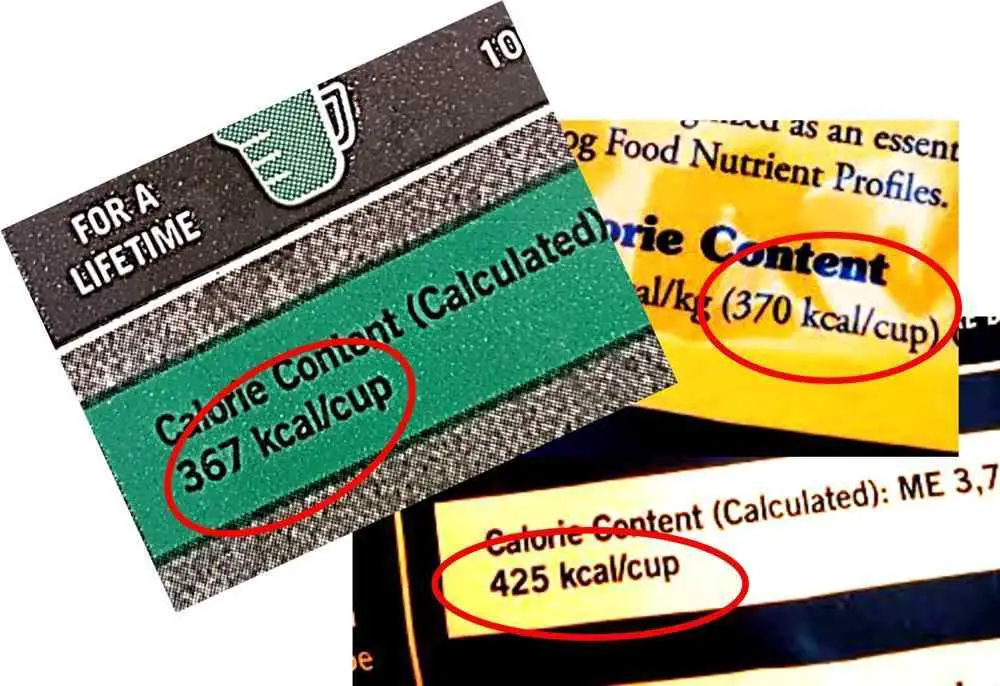
✔ Enter the current weight of your Chesapeake Bay Retriever.
✔ Select your Chesapeake Bay Retriever`s age range, activity level, and neuter status.
✔ If your Chesapeake Bay Retriever is overweight or underweight, and you want your Chesapeake Bay Retriever to lose or gain weight, enter the ideal weight of your Chesapeake Bay Retriever for its current age in the `How much you wish your dog currently weighs` box. Leave this box blank if your Chesapeake Bay Retriever is of normal weight.
CONSULT A LICENSED VETERINARIAN FOR PROFESSIONAL ADVICE BEFORE YOU PUT YOUR DOG ON A WEIGHT LOSS OR WEIGHT GAIN DIET.
How the Chesapeake Bay Retriever Food Calculator Works
First, the calculator estimates what is known as the Resting Energy Requirement (RER) of your Chesapeake Bay Retriever.
The RER is the amount of energy that your Chesapeake Bay Retriever needs when it is `resting`, that is when doing nothing. The calculator uses the current weight of your Chesapeake Bay Retriever to calculate your Chesapeake Bay Retriever`s resting energy.
Next, the calculator scales up the resting energy by a factor that corresponds to your Chesapeake Bay Retriever`s life stage (puppy or adult) and lifestyle (activity level, spayed/neutered, etc). This scaled up energy value (called the maintenance energy) is the energy that your Chesapeake Bay Retriever needs to maintain its life when not resting.
Finally, the Chesapeake Bay Retriever food calculator divides the maintenance energy by the amount of energy in one cup of dog food to calculate how many cups of dog food your Chesapeake Bay Retriever needs.
Monitoring Your Chesapeake Bay Retriever`s Growth
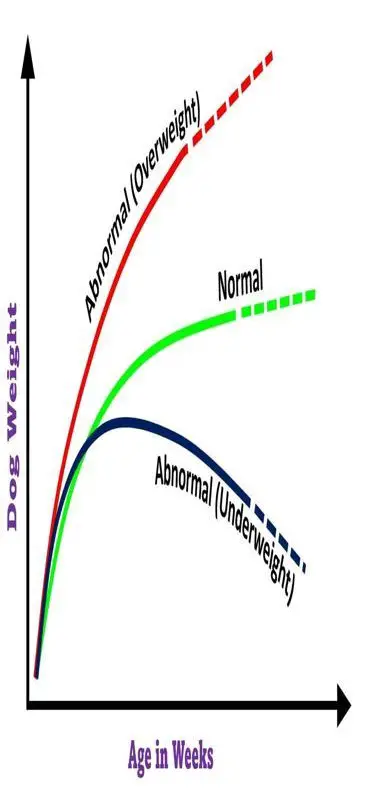
The answer from the Chesapeake Bay Retriever food calculator is a starting point number on how much food you need to feed your Chesapeake Bay Retriever.
Start by feeding your Chesapeake Bay Retriever the amount of food recommended by the Chesapeake Bay Retriever food calculator every day.
While feeding your Chesapeake Bay Retriever this daily amount of food, weigh your Chesapeake Bay Retriever at least once a week to ensure that your Chesapeake Bay Retriever is not on its way to becoming overweight or underweight.
If your Chesapeake Bay Retriever is becoming overweight, reduce the amount of food your feed it by 10 to 15 percent, if underweight increase its food by 10 to 15 percent.
You can use our dog weight tracking tool to keep records of your Chesapeake Bay Retriever`s weight. This tool will let you know if the feeding plan is making your Chesapeake Bay Retriever grow normally or abnormally.
You can also check your Chesapeake Bay Retriever body condition score to find out if it is overweight or underweight. Learn how to check your Chesapeake Bay Retriever body condition score here.
Chesapeake Bay Retriever Feeding Chart
Below is the typical feed chart for the Chesapeake Bay Retriever. This chart provides you a rough guide on how much dry dog food (kibble) to feed your Chesapeake Bay Retriever.
If you want a more accurate estimate of how much food to feed your Chesapeake Bay Retriever, use this Chesapeake Bay Retriever food calculator.
| Age | Typical Weight | How Much Food |
|---|---|---|
| 14 weeks | 23.2 lbs (10.5 kg) | 3.2 cups per day |
| 17 weeks | 30.7 lbs (13.9 kg) | 2.6 cups per day |
| 18 weeks | 32.9 lbs (14.9 kg) | 2.7 cups per day |
| 19 weeks | 35.0 lbs (15.9 kg) | 2.9 cups per day |
| 5 months | 37.1 lbs (16.8 kg) | 3.0 cups per day |
| 6 months | 44.2 lbs (20.1 kg) | 3.4 cups per day |
| 7 months | 49.9 lbs (22.7 kg) | 3.7 cups per day |
| 8 months | 54.4 lbs (24.7 kg) | 4.0 cups per day |
| 9 months | 57.9 lbs (26.3 kg) | 4.2 cups per day |
| 10 months | 60.5 lbs (27.4 kg) | 4.3 cups per day |
| 11 months | 62.3 lbs (28.3 kg) | 4.4 cups per day |
| 12 months | 63.6 lbs (28.9 kg) | 4.5 cups per day |
| 1 years | 64.5 lbs (29.3 kg) | 4.5 cups per day |
| 3 years | 65.7 lbs (29.8 kg) | 3.7 cups per day |
| 5 years | 65.7 lbs (29.8 kg) | 3.7 cups per day |
How to Measure the Right Amount of Dog Food for Your Chesapeake Bay Retriever
Research has shown that most owners over-measure a cup of dog food. As a result, most dogs owners overfeed their dogs. This is because dog owners do not level off the cup when measuring out the food they give to their dogs.
See how and how not to measure ONE cup of dry dog food in the picture below:
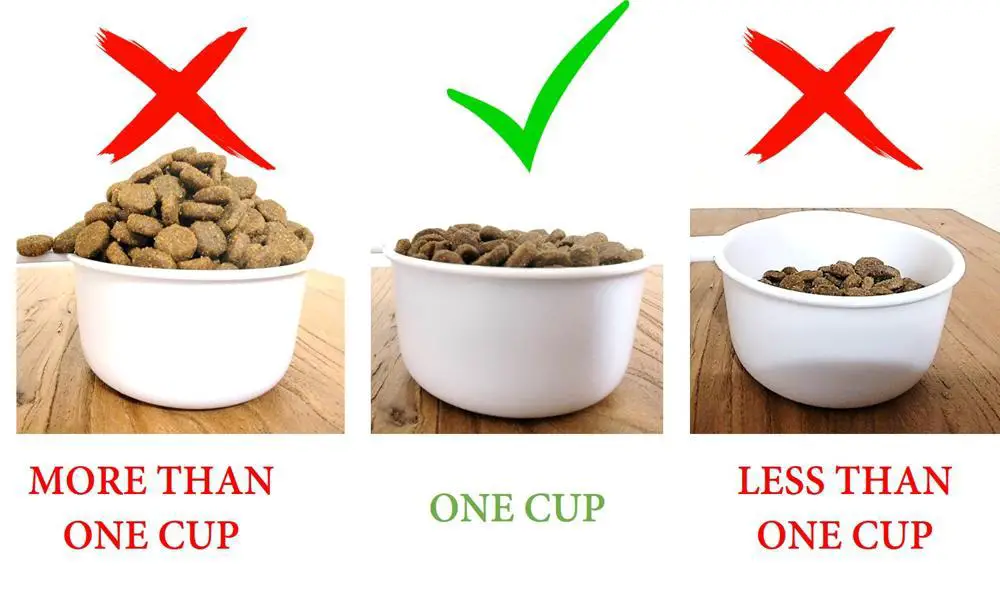
Note that one cup of dog food equals 8 oz of dog food or ~237 milliliters of dog food.
You can buy standard dog food measuring cups here on Amazon.
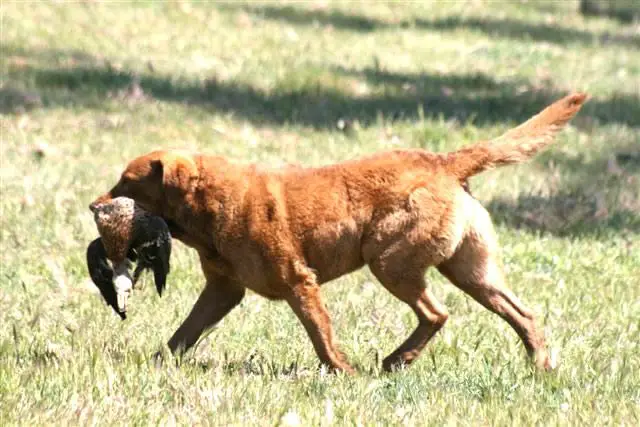
Best Food for Chesapeake Bay Retriever. Chesapeake Bay Retriever Feeding Guide
The Chesapeake Bay Retriever has different nutrient needs at different life stages. Therefore, the dog food that you feed your Chesapeake Bay Retriever at different ages should be the type that is appropriate for its age.
For example, during its puppy stage, your Chesapeake Bay Retriever needs the type of dog food that has been designed to help boost a puppy`s weak immune system.
On the other hand, the adult Chesapeake Bay Retriever should have already developed a good immune system. So, during the adult stage, you should feed your Chesapeake Bay Retriever the type of dog food that has been designed to prolong the life of a dog.
Nevertheless, some dogs still do well eating the same food at every stage of their lives.
However, feeding your Chesapeake Bay Retriever dog food that has been optimized for its age will ensure that your Chesapeake Bay Retriever grows well, lives well, and lives long.
Feeding Guide for the Chesapeake Bay Retriever Puppy: 12 weeks to one year
The dog food that you feed your puppy should have the nutrients that will boost a puppy`s immune system since puppies easily get infected with the disease at this age.
Also, a good puppy food should have the nutrients that support brain development and good vision.
Finally, a good dog food for the Chesapeake Bay Retriever puppy should be the type that will not make your Chesapeake Bay Retriever fat. The puppy food should also help increase the health of your puppy`s bones.
See our list of the best dry dog food and the best wet dog food for the Chesapeake Bay Retriever puppy below.
These dog foods have all the right amount of nutrients that the Chesapeake Bay Retriever puppy needs to grow well during its puppy years.
Best Dry Food For Chesapeake Bay Retriever Puppy: Hill`s Science Diet Dry Dog Food, Puppy, Chicken Meal & Barley Recipe
Best Wet Food For Chesapeake Bay Retriever Puppy: Purina Pro Plan High Protein Wet Puppy Food
Feeding Guide for the Young Adult Chesapeake Bay Retriever: Ages 1 year to 6 years
The dog food that you feed a young adult Chesapeake Bay Retriever should have the nutrients that will make a dog live longer.
A good dog food for the young adult Chesapeake Bay Retriever should also have the nutrients that will minimize the chances of your Chesapeake Bay Retriever getting infected with common dog diseases.
Also, a good dry dog food for the young adult Chesapeake Bay Retriever should help clean your dog`s teeth as your dog chews on the food.
Below is our best dog food recommendations for the young adult Chesapeake Bay Retriever
Best Dry Food For Young Adult Chesapeake Bay Retriever: Hill`s Science Diet Dry Dog Food, Adult Oral Care for Dental Health Dog Food, Chicken Rice & Barley Recipe
Best Wet Food For Young Adult Chesapeake Bay Retriever: Hill`s Science Diet Wet Dog Food, Chicken & Barley
Feeding Guide for Mature Adult Chesapeake Bay Retrievers: 6 years and older
You should feed the mature adult Chesapeake Bay Retriever food that has been formulated to improve their quality of life, increase their life expectancy, and increase their overall health.
Older dogs are prone to age-related health problems. A good diet is essential to minimize the possibility of becoming frail with age.
See our recommendation on the best food for the mature adult Chesapeake Bay Retriever below:
Best Dry Food For Mature Adult Chesapeake Bay Retriever: Hill`s Science Diet Dry Dog Food, Adult 7+ for Senior Dogs, Chicken Meal, Barley & Brown Rice Recipe
Best Wet Food For Mature Adult Chesapeake Bay Retriever: Hill`s Science Diet Wet Dog Food, Adult 7+ for Senior Dogs, Beef & Barley Recipe
Feeding Guide for Senior Dogs
One way to slow down the effects of aging in dogs is to reduce the amount of food you feed old dogs by 20 to 30% of normal while meeting essential nutrient needs.
Reducing a senior Chesapeake Bay Retriever`s food slows the aging process and reduces the risk for cancer, kidney diseases, arthritis, and immune-related diseases.
AAFCO-Certified Dog Food for the Chesapeake Bay Retriever
No matter which commercial food that you feed your Chesapeake Bay Retriever, make sure that the food is approved by the Association of American Feed Control Officials (AAFCO).
AAFCO is an expert body that rigorously tests dog food to make sure that the dog food is safe.
Also, AAFCO ensures that a dog food has all the nutrients (not just calories) that a dog needs to grow well before AAFCO approves the dog food.
Unlike homemade dog food, most commercial dog foods are AAFCO-approved. Double-check the label of your dog food to make sure it has been certified by AAFCO before feeding it to your Chesapeake Bay Retriever.
How Much Food to Feed the Chesapeake Bay Retriever
How Much Food to Feed a 15-Week-Old Chesapeake Bay Retriever Puppy
You should feed your 15-week-old Chesapeake Bay Retriever puppy 3.4 cups of dry dog food (kibble) every day.
You may divide this food into two or three separate meals and give it to your Chesapeake Bay Retriever puppy over the day.
Our recommendation on how much food should feed your 15-week-old Chesapeake Bay Retriever puppy assumes that the weight of your Chesapeake Bay Retriever is typical for its age.
The typical weight for a 15-week-old Chesapeake Bay Retriever puppy is 25.8 lbs (11.7 kg).
Our recommendation on how much food you should feed your Chesapeake Bay Retriever also assumes that you feed your Chesapeake Bay Retriever a dog food with a calorie content of 389 kcal per cup.
If you want a more accurate estimation of how much food to feed your Chesapeake Bay Retriever puppy based on its exact weight, the exact type of dog food that you feed your Chesapeake Bay Retriever, and other factors, use our Chesapeake Bay Retriever food calculator.
How Much Food to Feed a 18-Week-Old Chesapeake Bay Retriever Puppy
You should feed your 18-week-old Chesapeake Bay Retriever puppy 2.7 cups of dry dog food (kibble) every day.
You may divide this food into two or three separate meals and give it to your Chesapeake Bay Retriever puppy over the day.
Our recommendation on how much food should feed your 18-week-old Chesapeake Bay Retriever puppy assumes that the weight of your Chesapeake Bay Retriever is typical for its age.
The typical weight for a 18-week-old Chesapeake Bay Retriever puppy is 32.9 lbs (14.9 kg).
Our recommendation on how much food you should feed your Chesapeake Bay Retriever also assumes that you feed your Chesapeake Bay Retriever a dog food with a calorie content of 389 kcal per cup.
If you want a more accurate estimation of how much food to feed your Chesapeake Bay Retriever puppy based on its exact weight, the exact type of dog food that you feed your Chesapeake Bay Retriever, and other factors, use our Chesapeake Bay Retriever food calculator.
How Much Food to Feed a 5-Month-Old Chesapeake Bay Retriever Puppy
You should feed your 5-month-old Chesapeake Bay Retriever puppy 3.0 cups of dry dog food (kibble) every day.
Ration this food into two or three separate portions and give it to your Chesapeake Bay Retriever puppy over the day.
Our recommendation on how much food you should feed your 5-month-old Chesapeake Bay Retriever puppy assumes that the weight of your Chesapeake Bay Retriever is typical for its age.
The typical weight for a 5-month-old Chesapeake Bay Retriever puppy is 37.1 lbs (16.8 kg).
Our recommendation on how much food to feed your Chesapeake Bay Retriever also assumes that you feed your Chesapeake Bay Retriever dog food that has an average calorie density (389 kcal per cup).
Use our Chesapeake Bay Retriever food calculator to calculate a more accurate estimation of how much food to feed your Chesapeake Bay Retriever.
How Much Food to Feed a 9-Month-Old Chesapeake Bay Retriever Puppy
You should feed your 9-month-old Chesapeake Bay Retriever puppy 4.2 cups of dry dog food (kibble) every day.
Ration this food into two or three separate portions and give it to your Chesapeake Bay Retriever puppy over the day.
Our recommendation on how much food you should feed your 9-month-old Chesapeake Bay Retriever puppy assumes that the weight of your Chesapeake Bay Retriever is typical for its age.
The typical weight for a 9-month-old Chesapeake Bay Retriever puppy is 57.9 lbs (26.3 kg).
Our recommendation on how much food to feed your Chesapeake Bay Retriever also assumes that you feed your Chesapeake Bay Retriever dog food that has an average calorie density (389 kcal per cup).
Use our Chesapeake Bay Retriever food calculator to calculate a more accurate estimation of how much food to feed your Chesapeake Bay Retriever.
How Much Food to Feed a 8-Year-Old Chesapeake Bay Retriever
You should feed your 8-year-old Chesapeake Bay Retriever 3.7 cups of dry dog food (kibble) every day.
Ration this food into two or three separate portions and give it to your Chesapeake Bay Retriever over the day.
Our recommendation on how much food you need to feed your 8-year-old Chesapeake Bay Retriever assumes that the weight of your Chesapeake Bay Retriever is typical for its age.
The typical weight for a 8-year-old Chesapeake Bay Retriever puppy is 65.7 lbs (29.8 kg).
Our recommendation on how much food to feed your Chesapeake Bay Retriever also assumes that you feed your Chesapeake Bay Retriever dog food of that contains 389 kilocalories of energy per cup.
Use our Chesapeake Bay Retriever food calculator for a more accurate estimation of how much food to feed your Chesapeake Bay Retriever.
How Much Food to Feed a 11-Year-Old Chesapeake Bay Retriever
You should feed your 11-year-old Chesapeake Bay Retriever 3.7 cups of dry dog food (kibble) every day.
Ration this food into two or three separate portions and give it to your Chesapeake Bay Retriever over the day.
Our recommendation on how much food you need to feed your 11-year-old Chesapeake Bay Retriever assumes that the weight of your Chesapeake Bay Retriever is typical for its age.
The typical weight for a 11-year-old Chesapeake Bay Retriever puppy is 65.7 lbs (29.8 kg).
Our recommendation on how much food to feed your Chesapeake Bay Retriever also assumes that you feed your Chesapeake Bay Retriever dog food of that contains 389 kilocalories of energy per cup.
Use our Chesapeake Bay Retriever food calculator for a more accurate estimation of how much food to feed your Chesapeake Bay Retriever.
How Much Food to Feed a 53-Pound Chesapeake Bay Retriever
You should feed your 53-Pound Chesapeake Bay Retriever 3.5 cups of dry dog food (kibble) every day.
Ration this food into two or three separate potions and give it to your Chesapeake Bay Retriever over the day.
Our recommendation on how much food to feed your Chesapeake Bay Retriever also assumes that you feed your Chesapeake Bay Retriever a dog food that has an energy content of 389 kilocalories per cup, and that your Chesapeake Bay Retriever is reproductively intact.
Also, we assume that your Chesapeake Bay Retriever is not overweight or underweight.
Use our Chesapeake Bay Retriever food calculator for a more accurate estimation of how much food to feed your Chesapeake Bay Retriever.
How Much Food to Feed a 64-Pound Chesapeake Bay Retriever
You should feed your 64-Pound Chesapeake Bay Retriever 4.0 cups of dry dog food (kibble) every day.
Ration this food into two or three separate potions and give it to your Chesapeake Bay Retriever over the day.
Our recommendation on how much food to feed your Chesapeake Bay Retriever also assumes that you feed your Chesapeake Bay Retriever a dog food that has an energy content of 389 kilocalories per cup, and that your Chesapeake Bay Retriever is reproductively intact.
Also, we assume that your Chesapeake Bay Retriever is not overweight or underweight.
Use our Chesapeake Bay Retriever food calculator for a more accurate estimation of how much food to feed your Chesapeake Bay Retriever.
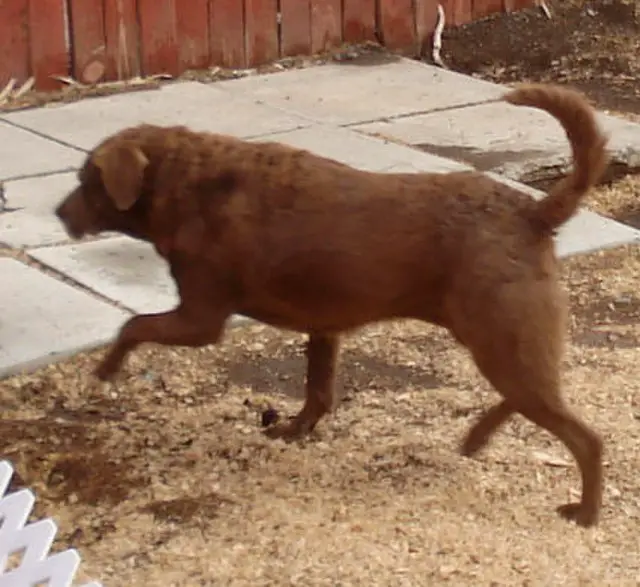
How Many Times to Feed the Chesapeake Bay Retriever a Day
When it comes to how many times to feed a dog, there are three different ways to feed the Chesapeake Bay Retriever
One way is to make food available to the Chesapeake Bay Retriever at all times (free-choice feeding).
Another way is to feed the Chesapeake Bay Retriever two or three times a day (food-restricted feeding). This is the feeding method that works the best for most Chesapeake Bay Retrievers.
The third way is to make food available to your Chesapeake Bay Retriever for a short time (about 10 minutes) once or twice a day (time-restricted feeding).
Each of these feeding methods has its advantages and disadvantages, which will be discussed next.
Free-Choice Feeding
This is a feeding method when you make food available to your Chesapeake Bay Retriever all the time.
Food-Restricted Meal Feeding
Food-limited feeding requires feeding a measured amount of food based on the Chesapeake Bay Retriever’s daily energy requirements divided into two or three meals per day.
This is the method of choice for feeding puppies that are at risk of developing bone diseases due to rapid growth. Restricting the food of a rapidly growing dog will ensure that the dog grows normally.
Time-Limited Feeding
This is a dog feeding method in which dogs are allowed access to food for a short period, usually 10 to 15 minutes, once or twice daily (three times per day for the first month after weaning, then twice per day).
| Method | Advantages | Disadvantages |
|---|---|---|
| Free-choice feeding |
|
|
| Food-restricted feeding |
|
|
| Time-restricted feeding |
|
|
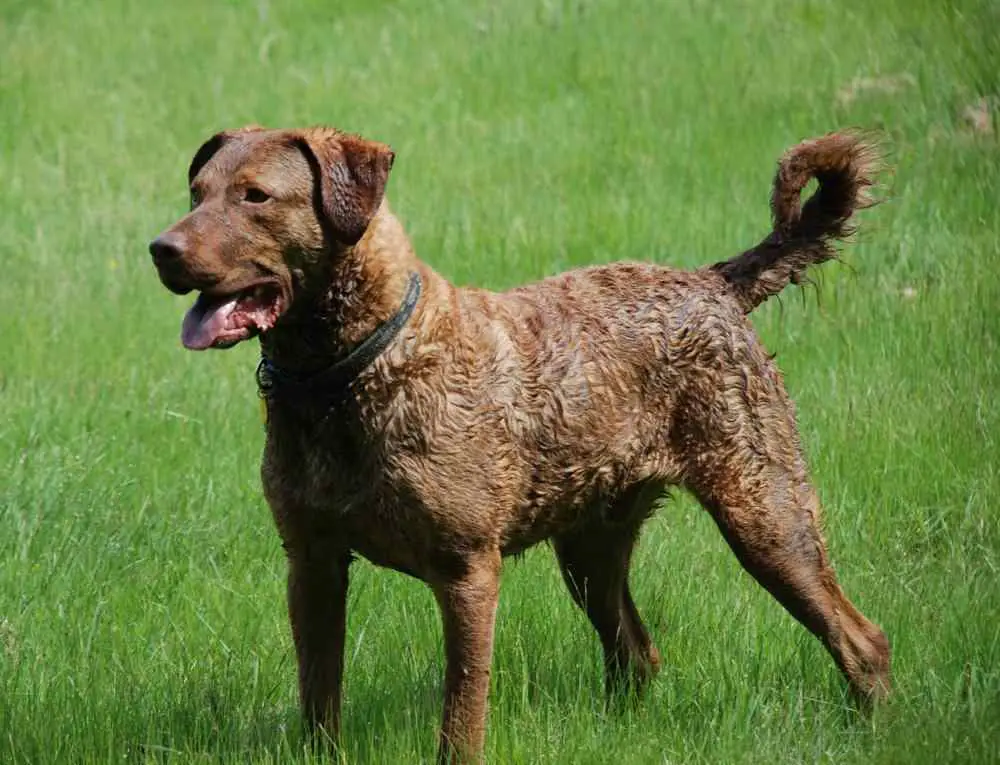
Effect of Neutering/Spaying on How Much Food your Chesapeake Bay Retriever eats
Neutered/spayed dogs tend to get fat twice as easily as intact dogs.
Studies have shown that neutering/spaying may increase your Chesapeake Bay Retriever`s appetite for more food. Also, your Chesapeake Bay Retriever`s physical activity decreases after neutering/spaying. These factors lead to weight gain.
Neutering may lead to more weight gain in male Chesapeake Bay Retrievers because neutered dogs roam less (which means less exercise).
Therefore, the amount of food that you give to a neutered Chesapeake Bay Retriever should be reduced after you neuter your Chesapeake Bay Retriever to prevent weight gain.
Use our Chesapeake Bay Retriever food calculator to calculate how much food to feed a neutered/spayed Chesapeake Bay Retriever.
Effect of Weather on How Much Food Your Chesapeake Bay Retriever Needs
Chesapeake Bay Retrievers that live in cold environments need more food (especially, food high in fat) than Chesapeake Bay Retrievers that live in hot environments.
Hot weather, on the other hand, does not increase the amount of food your Chesapeake Bay Retriever needs. Hot weather only makes your Chesapeake Bay Retriever need more water.
Since most Chesapeake Bay Retrievers live in a temperature-controlled environment as their owners. Therefore, owners do not need to increase or decrease the amount of food they give to their Chesapeake Bay Retrievers based on the outside weather.
Important Note on Treats and Table Food
Because meeting a dog`s nutrient requirements is not the primary goal of dog treats, most commercial dog treats do not contain the essential nutrients that your Chesapeake Bay Retriever needs.
However, a few treats are complete and balanced and are approved by AAFCO, or some other credible dog food regulatory agency. Check the label on your dog treat to know if the dog treat has a complete and balanced nutrient profile.
Nevertheless, dog treats, either balanced or unbalanced in nutrients, are valid sources of calories for your dog. Therefore, if you give your dog lots of treats, you should reduce the amount of the regular dog food that you give your dog accordingly to account for the treats. That way, you will not overfeed your dog.
Also, human table foods do not contain the important nutrients that your Chesapeake Bay Retriever needs for healthy growth.
Also, human table foods may contain very high levels of fat or sodium and other minerals that are harmful to your Chesapeake Bay Retriever.
Moreover, know that when you feed your Chesapeake Bay Retriever table food, you fill your Chesapeake Bay Retriever`s stomach with dog `junk food`. This will suppress your Chesapeake Bay Retriever`s appetite and thereby make your Chesapeake Bay Retriever unable to eat its normal dog food that contains the essential nutrients for your Chesapeake Bay Retriever`s growth.
We do not recommend giving your Chesapeake Bay Retriever table food.
Conclusion
Most commercial dog food labels contain recommendations on how much of the food to feed a dog. However, their recommendations are very general.
Therefore, in this article, we have provided your specific advice on how to properly feed your Chesapeake Bay Retriever.
